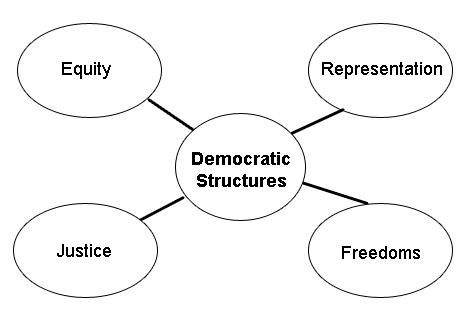| Social Studies – Grade 6 | Close this window |
 |
A Reflection on Ancient Athens... (OCI) > Lessons from the Past (CC) |
  |
What's this? |
Lessons from the Past
Create a powerful metaphor that represents significant elements of democracy in the ancient Athens or the Iroquois Confederacy.
|
||||
 |
||||
Suggested ActivitiesStudents summarize what they learned about two democracies by creating a powerful metaphor that represents essential elements of the democratic system of ancient Athens or the Iroquois Confederacy. Students also identify the three most important lessons for Canadians on effective democratic systems. Organize evidence of effective democratic systems Here is a sample mind map:
The students add specific details from the Athenian and Iroquois democratic systems that shows elements were present or absent. Ask students to use one colour (e.g., red) to add evidence that shows the element was present and another colour (e.g., blue) for evidence that shows the element was absent. Rate the Athenian and Iroquoian democracies Rate the Canadian democracy Introduction to concept: Metaphors Choose the object that best represents the characteristics of the classroom and the object that least represents the characteristics of a classroom. Display a definition of the word metaphor and ask students to explain how the preceding activity fits the definition. Here are some examples of metaphors:
For more information, see Defining Terms (Support Material). Identify criteria for powerful metaphors As they explain their sorting, identify criteria that could be used to select powerful metaphors. Guide students in reducing the list to only three or four criteria by combining similar criteria. Criteria may include the following:
Design a metaphor Suggest to students that they share their metaphors with a partner to gather feedback about the degree to which they have met the criteria for a powerful metaphor. Share metaphors |
||||
 |



